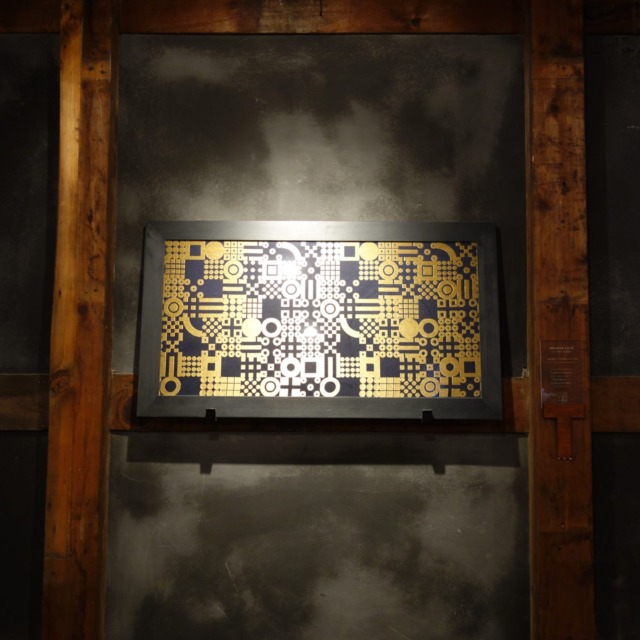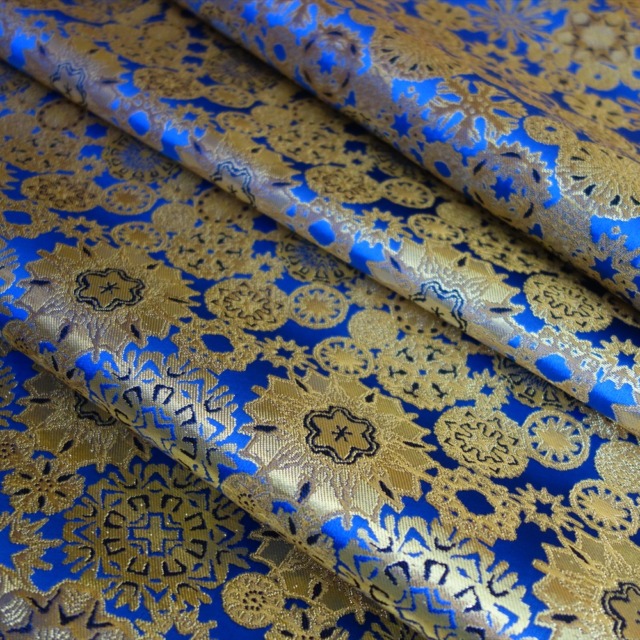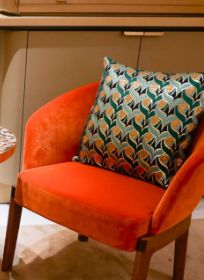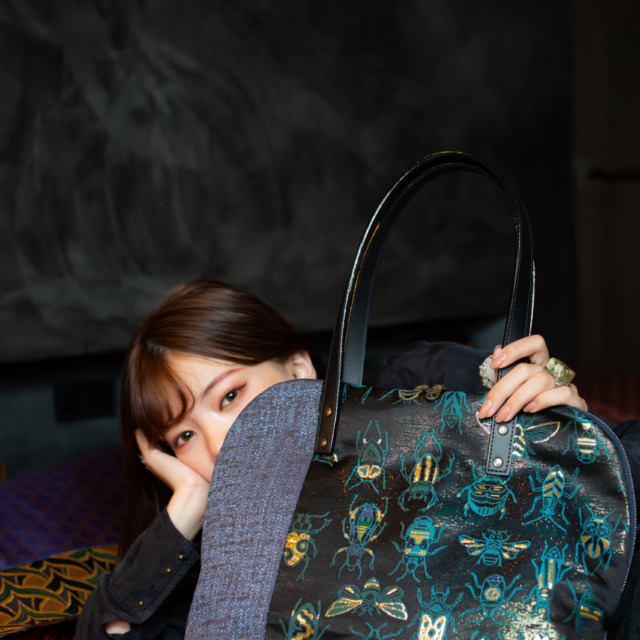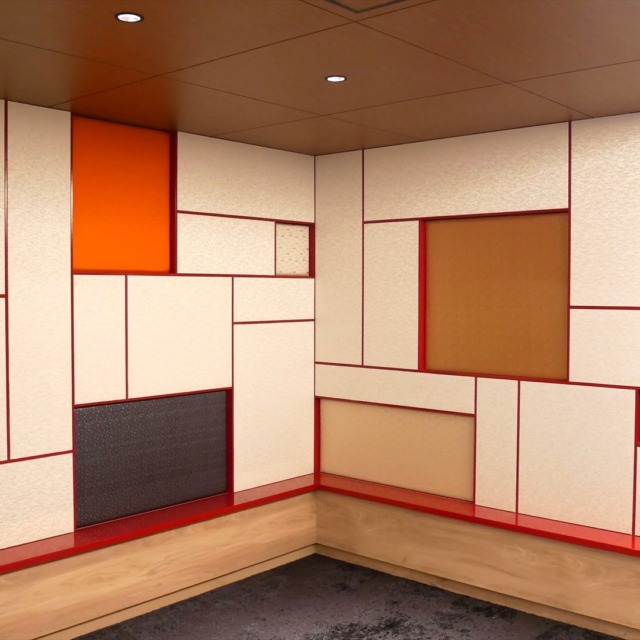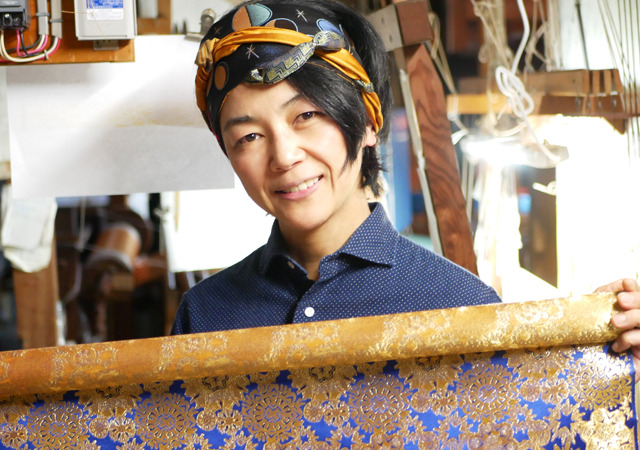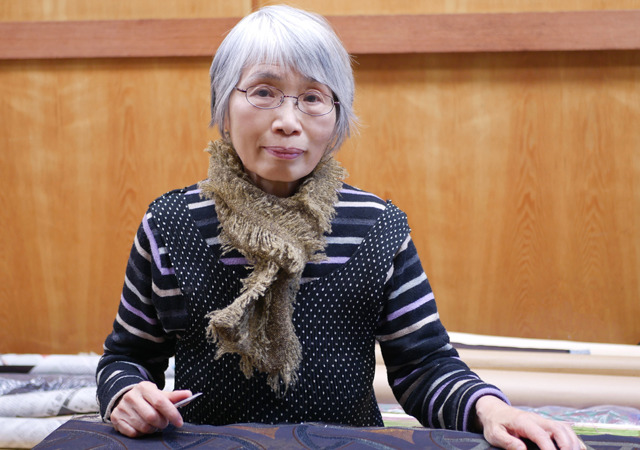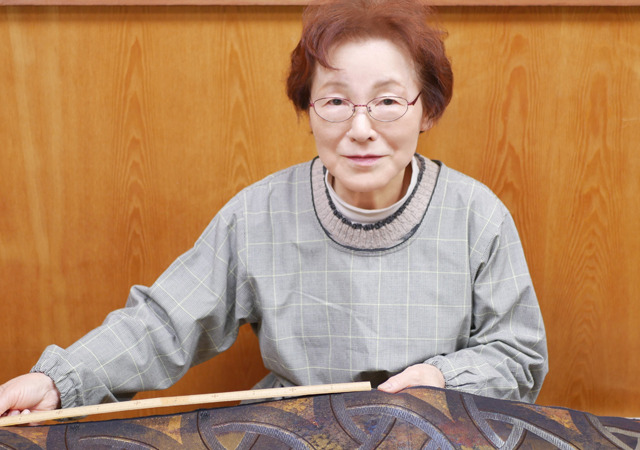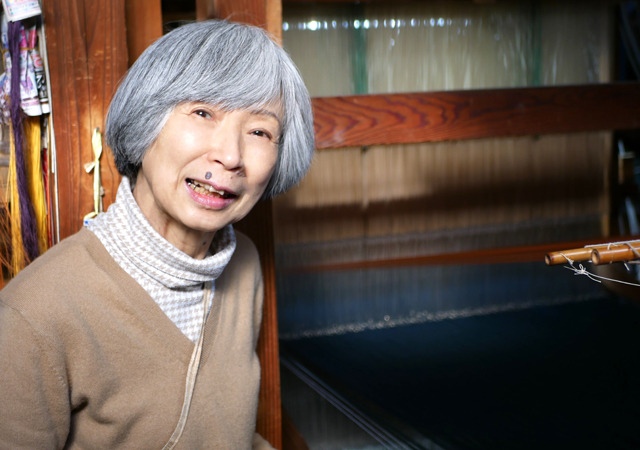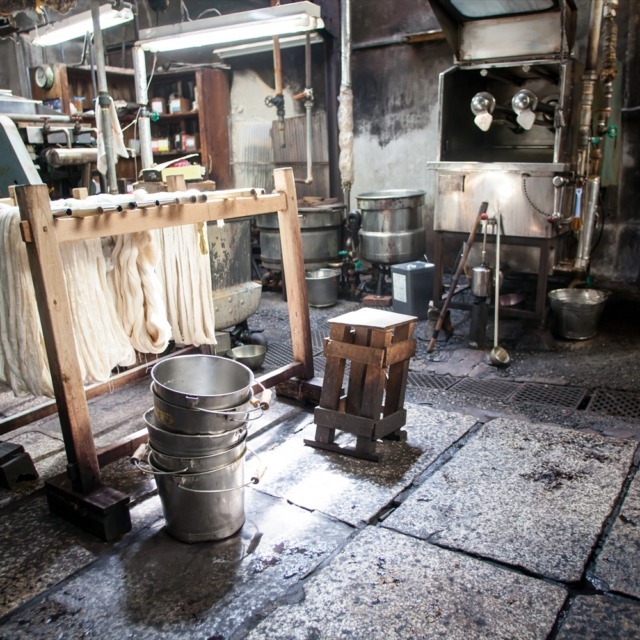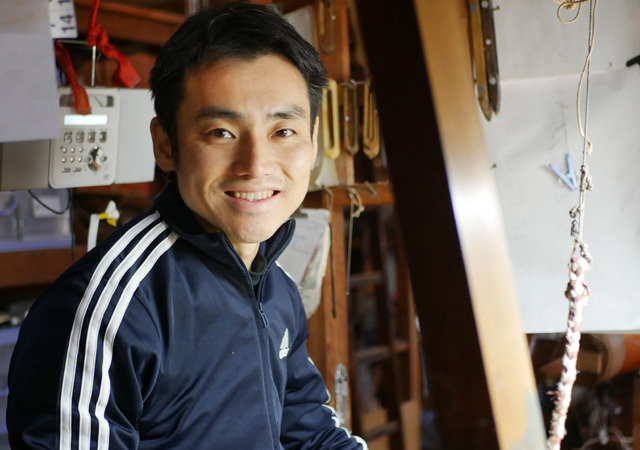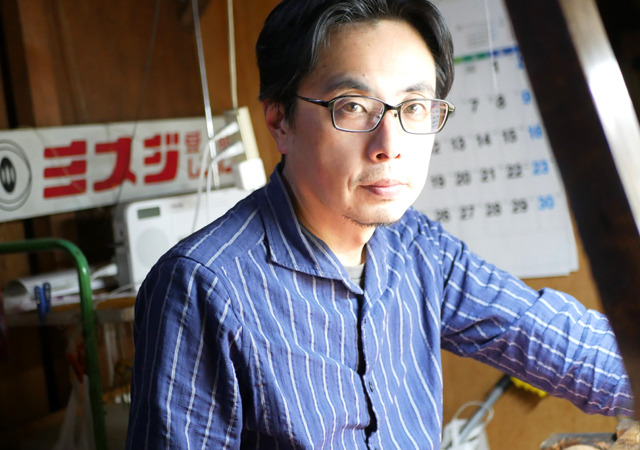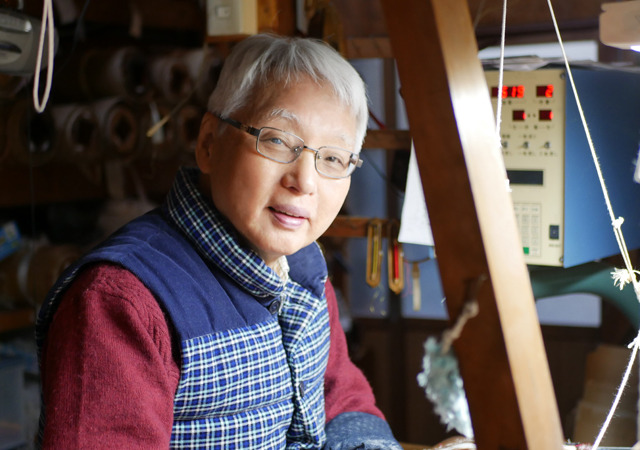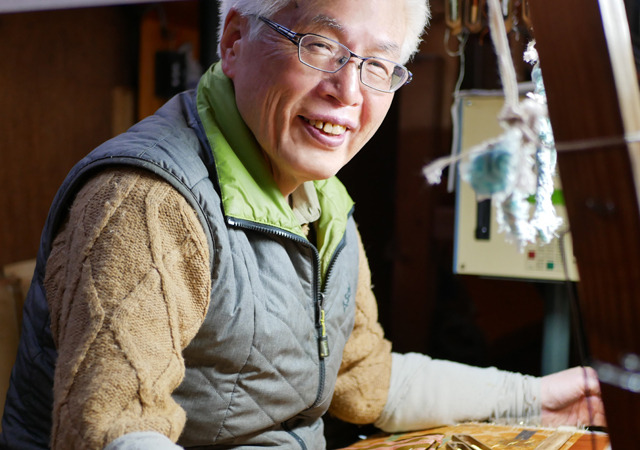Ema Okamoto (Executive Managing Director) Textile Designer
Wife of Keiji. Born in Sapporo. After graduating from university, she married into the Okamoto family in 1998 and entered the world of Nishijin kinran fabric. Textile design, product development, SNS, public relations, etc.
Textiles were a part of my life since I was a child, but I only came upon Nishijin brocade when I got married. As I went about my work, I was captivated by the beauty of Kinran. These silk textiles evolved to express paradise in Buddhist temples; they are created for entertainment. But it’s taboo to tell outsiders about Okamoto’s work for shrines and temples. It frustrated me that we had made these textiles with these amazing techniques and materials but we couldn’t just tell the general public about these Nishijin Kinran brocade silks, so I created Kinran in new designs and publicly promoted them on social media. The first pattern I designed was called Africa, inspired the fact that I wanted to go to Africa, and I’ve gradually increased my designs since.
The “kin” in Kinran means “gold” in Japanese, after the golden color that is achieved by this technique. We can weave silks that are 70cm wide, based on the width that can be woven by hand. A high-speed mechanical loom can weave wide textiles quickly, but the distinctive full texture can only be woven with the old power looms. We don’t compromise on texture; it’s an important element for us. I strive to make designs that have never been seen in Kinran before while maintaining the classic elegance and sumptuousness, to create designs that will lift people’s moods. I want to make designs from things that tug at my own heartstrings in my day-to-day life.
In future, I will propose Kinran for interior design and architectural spaces to expand the possibilities for Kinran.
In future, traditional craftsmen themselves will have to develop the skills to produce and promote their products. We will open up the skills we have thus far used solely for making items so that we can bring new ideas to life. If the many craftsmen in Kyoto work together on industry-wide cooperation like sharing techniques, I’m sure this will lead to new products and markets. I also believe that if we build a mutually beneficial framework where customers enjoy our products and we can pass solid profits to the people upstream of us, this will be a road to a better future for our craft, so that is something I am working on.
(Interviewed on November 13, 2023 / Text by Sakiyo Morimoto)

